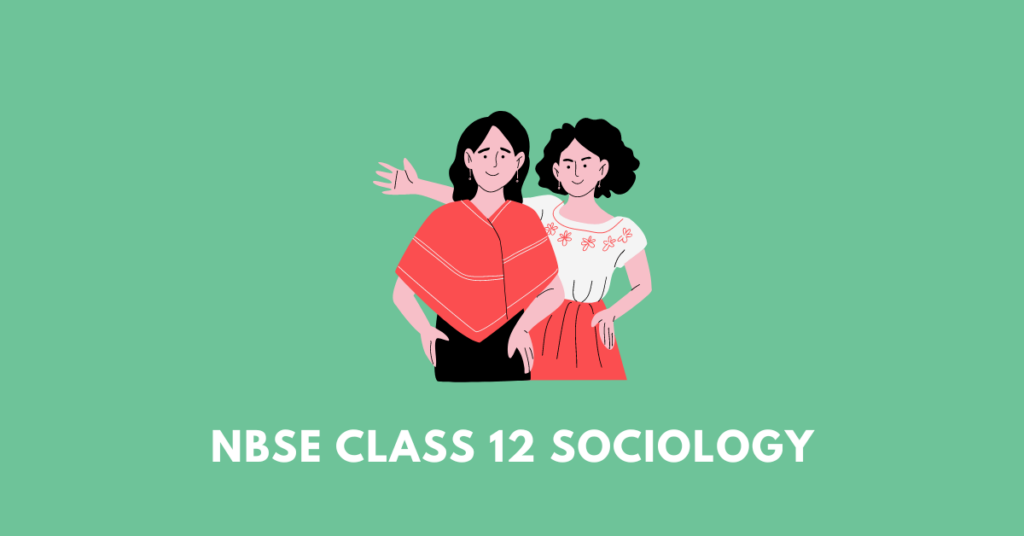Get syllabus, summary, textual answers, solutions, notes, extras, PDF, MCQs to NBSE Class 12 (Arts) Sociology all chapters. However, the educational materials should only be used for reference and students are encouraged to make necessary changes. Please select the subject/chapter and proceed.
| Part A: Structure of Indian Society |
| Unit 1: The Challenges of Unity in Diversity |
| Unit 2: Structure of Society |
| Unit 3: Institutional Structure |
| Unit 4: Social Inequality |
| Unit 5: Society in Nagaland |
| Part B: Social Change in India |
| Unit 6: Processes of Social Change in India |
| Unit 7: State, Economic Development and Social Change |
| Unit 8: Education, Media and Social Change |
| Unit 9: Social Movements |
| Unit 10: Indian Sociologist |
About NBSE Class 12 Sociology textbook
The Nagaland Board of School Education (NBSE) introduced a comprehensive Class 12 Sociology textbook to bring uniformity in teaching Sociology across the state. Developed by experienced Sociology teachers, this textbook focuses on the structure of Indian society and social change in India.
The main objective of the textbook is to enable learners to observe social reality objectively, inculcate scientific temper, and foster an ability to perceive reality. It introduces students to fundamental concepts of Sociology and helps them interpret social life and become familiar with contemporary processes of development and change in India.
The Class 12 Sociology textbook covers topics such as the challenges of unity in diversity, the structure of society, institutional structures, social inequality, society in Nagaland, processes of social change in India, the role of the state in economic development and social change, education, media and social change, social movements, and influential Indian sociologists.
India is a diverse country with a rich cultural heritage. The textbook sheds light on the challenges faced in maintaining unity amidst this diversity and explores the factors that contribute to social cohesion. It delves into the hierarchical structure of Indian society, encompassing caste, class, and gender-based distinctions, and discusses the institutional structures that shape society, such as family, marriage, religion, and the education system.
The textbook highlights social inequalities prevalent in India, including economic disparities, gender discrimination, and caste-based divisions, and encourages students to critically analyse their roots and impact on society. It provides a glimpse into the unique social and cultural aspects of Nagaland, highlighting its diverse tribal communities, customs, and traditions.
The textbook examines various factors responsible for social change in India, such as urbanisation, industrialization, globalisation, and technological advancements. It discusses the role of the Indian government in fostering economic development and how it influences social change. It also explores the impact of education and media on social change, evaluating their roles in shaping public opinion, disseminating information, and facilitating societal transformation. The textbook delves into various social movements in India and introduces students to prominent Indian sociologists, elaborating on their contributions to the field and their influence on sociological thought.

Ron’e Dutta is a journalist, teacher, aspiring novelist, and blogger. He manages Online Free Notes and reads Victorian literature. His favourite book is Wuthering Heights by Emily Bronte and he hopes to travel the world. Get in touch with him by sending him a friend request.
Get notes of other boards, classes, and subjects
